#1810
Explore tagged Tumblr posts
Text
The correct date and title as indicated by the collection differ slightly, yet significantly:
Ink Stand, Stoneware with metallic oxide stain (basalt ware), 12.07 × 28.58 × 10.8 cm, ca. 1810, produced by Wedgwood Factory (English, founded 1759).
The heads adorning either side are described to be a phoenix and a crocodile (despite resembling a dog and a cock).

Wedgwood Ink Stand in the Shape of Cleopatra's Barge, English, 1810
From the Nelson-Atkins Museum of Art
51 notes
·
View notes
Text



Court coat, 1815-20, breeches, 1800-10, and waistcoat ca. 1800
From Kerry Taylor Auctions
264 notes
·
View notes
Text
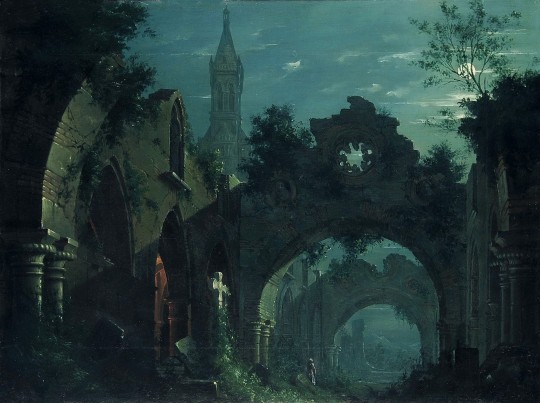
#art#painting#oil on panel#architecture#gothic#nocturne#night#moon#full moon#moonlit#church#cathedral#ruins#atmospheric#perspective#1810#antonio basoli
1K notes
·
View notes
Photo
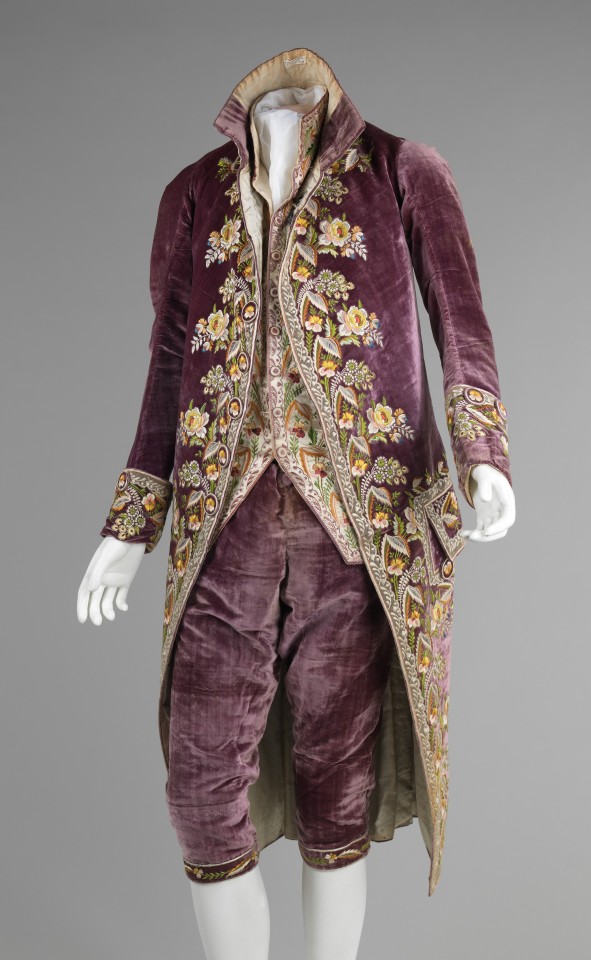
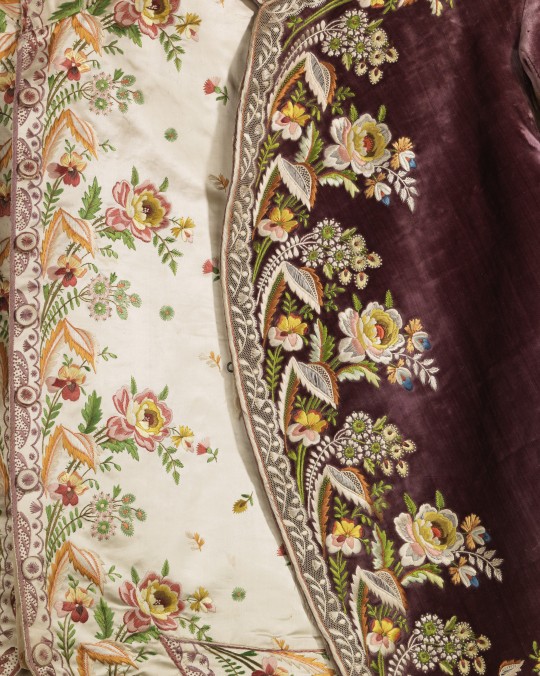
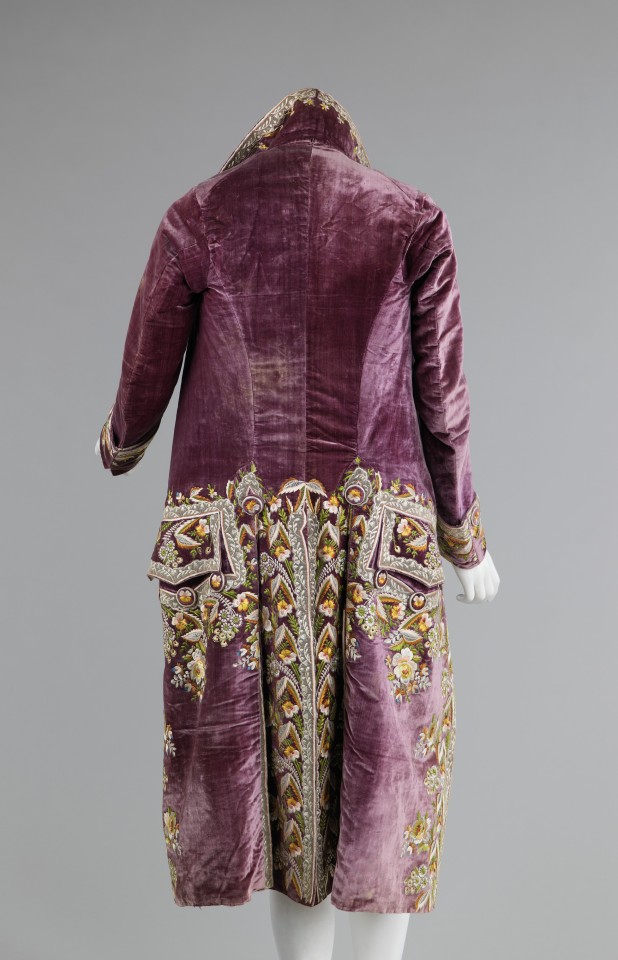
Court Suit
c.1810
France
This three piece suit is exemplary of skilled French embroidery and the silhouette of men's court wear during the time of Napoleon Bonaparte (1769-1821). Bonaparte revived the importance of court traditions when he crowned himself Emperor in 1804. This revival necessitated the recreation of acceptable court dress, which had been defunct since the elaborate and costly court of Louis XVI (1754-1793) prior to the French Revolution. The intricate embroidery pattern is intriguingly mimicked between the waistcoat and coat, reinforcing its status as a full suit. (The MET)
The MET (Accession Number: 2009.300.1001a–c)
#court suit#menswear#mens fashion#1810s#empire#19th century#purple#floral#embroidery#france#first empire#napoleon#1810#silk#the met#popular
3K notes
·
View notes
Text


submitted by @ever-since-ny 💛💚
#historical fashion poll submission#historical fashion polls#fashion poll#historical dress#historical fashion#dress history#fashion history#fashion plate#19th century#19th century fashion#19th century dress#early 19th century#1810s fashion#1810s dress#1810s#1810#1811#skirt
91 notes
·
View notes
Text

Letter from Napoleon, Emperor of France
Record Group 59: General Records of the Department of StateSeries: Communications from Heads of Foreign StatesFile Unit: Ceremonial Letters from Napoleon
[number 32 written sideways in upper left corner]
Très chers et Grande Amie, Nous ne différence poins à vous informer de notre
mariage avec l'Archiduchesse Marie Louise d'Autriche. Nous connaissons trop
bien vos Sentimens à notre regard pour ne pas être persuadé que vous prendrez la plus grande par à la
satisfaction que nous cause evenement. L'intérêz que nous prenonce à tous ce qui touche nous fait
desirer les occasions de vous en donner des prevue, et vous devez d'autani plus compter sur nos, ce
Sentimens qu'il se sont fond ce sur le sincere attachement et sur l'affection que nous vous portone. Sur ce
Nous prions Dieu, Très chers et Grands Ami, ce qu'il vous ait en sa sainte et digne garde.
A Paris, le 3 Avril 1810.
Votre bon Ami
Napoleon [signature]
Champagny, duc de Cadore [faint signature in lower right corner ]
[illegible line under signature]
#archivesgov#april 3#1810#19th century#france#napoleon#napoleon bonaparte#french empire#habsburg dynasty
48 notes
·
View notes
Text

Christoffer Wilhelm Eckersberg (Danish, 1783-1853) View North of Kronborg Castle, ca.1810
#Christoffer Wilhelm Eckersberg#danish art#danish#denmark#1810#1800s#regency#art#fine art#european art#classical art#europe#european#fine arts#oil painting#europa#landscape art#landscape
43 notes
·
View notes
Text

Journal des Dames et des Modes, Costume Parisien, 5 juillet 1810, (1071): Habit habillé. Chapeau à Plumet. Epée à poignée d'Acier. Collection of the Rijksmuseum, Netherlands
Standing man dressed in a 'habit habillé', consisting of a habit à la Françause with a very high collar, vest and culottes. Wrinkled jabot and cuffs. Neckerchief and stockings. Under the arm a hat with a plume. On the left a sword with a steel handle. Further accessories: breloque, flat shoes with square buckles. The print is part of the fashion magazine Journal des Dames et des Modes, published by Pierre de la Mésangère, Paris, 1797-1839.
#Journal des Dames et des Modes#19th century#1810s#1810#on this day#July 5#periodical#fashion#fashion plate#color#description#rijksmuseum#dress#menswear#Mésangère
30 notes
·
View notes
Text

White muslin day dress, ca. 1810, Italian.
Uffizi Gallery.
#uffizi gallery#womenswear#extant garments#dress#cotton#19th century#Italy#1810#1810s#1810s dress#1810s Italy#1810s extant garment#muslin
65 notes
·
View notes
Text

The Public Viewing David's "Coronation" at the Louvre
Artist: Louis Léopold Boilly (French, 1761–1845)
Date: 1810
Medium: Oil on Canvas
Collection: The Met Fifth Avenue, New York City, NY, United States
Description
Jacques Louis David’s gigantic painting of Napoleon crowning his wife as Empress Josephine was shown on three occasions at the Musée du Louvre between 1808 and 1810. These public spectacles were highly political, celebratory endorsements of Napoleon’s audacious claim to power in 1804. As represented by Boilly, visitors to the Louvre could decipher the key actors in David’s vast composition by consulting printed guidebooks, such as the one held by the military man at left. Hats are being removed, either in deference to the imperial couple or for better visibility; children make up a significant proportion of the crowd, perhaps in reference to the future of France.
#painting#oil on canvas#fine art#the louvre#france#louis leopold boilly#art viewing#french painter#napoleon#empress josephine#marriage ceremony#french history#19th century painting#french art#1810#paris#louvre museum
18 notes
·
View notes
Text

Wool Pelisse with Cotton Braid, English/French, 1810-20
From the National Gallery of Victoria
#pelisse#coat#fashion#fashion history#outerwear#history#1810#1820#1810s#1820s#1800s#19th century#regency#empire#english#french
403 notes
·
View notes
Text
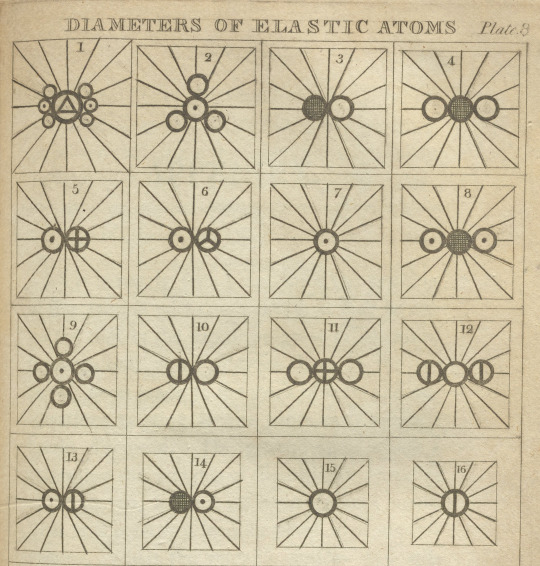
Diameters. of elastic atoms. A New System of Chemical Philosophy. 1810.
Science History Library
325 notes
·
View notes
Text
In 1810, Beethoven was taken to the future along with historical figures Napoleon, Billy the Kid, Socrates, Sigmund Freud, Joan of Arc, Genghis Kahn, and Abraham Lincoln by time travelers Bill and Ted. In 1988 they spent the day in San Dimas, CA (Bill and Ted’s Excellent Adventure, Flm)

#nerds yearbook#sci fi movies#time travel#1810#1988#bill and ted's excellent adventure#stephen herek#chris matheson#ed solomon#clifford david#beethoven#keanu reeves#ted theodore logan#alex winter#bill s preston esquire#george carlin#rufus#terry camilleri#napoléon#dan shor#billy the kid#tony steedman#socrates#rod loomis#sigmund freud#al leong#genghis khan#jane wiedlin#joan of arc#robert v barron
15 notes
·
View notes
Text

Pastille Burner
Meissen Porcelain Manufactory (German)
c.1810
Indianapolis Museum of Art (Accession Number: 80.9A-C)
#pastille burner#furnishings#fashion history#art history#1810s#1810#empire era#19th century#enamel#porcelain#germany#meissen porcelain manufactory#blue#white#gold#indianapolis museum of art#think of a pastille burner as like ye olde wax melt burner
318 notes
·
View notes
Text


submitted by @ever-since-ny 🩷🩵
#historical fashion poll submission#historical fashion polls#fashion poll#historical dress#historical fashion#dress history#fashion history#fashion plate#19th century#19th century fashion#19th century dress#early 19th century#1810s dress#1810s fashion#1810s#1810#1811#skirt
99 notes
·
View notes
Text
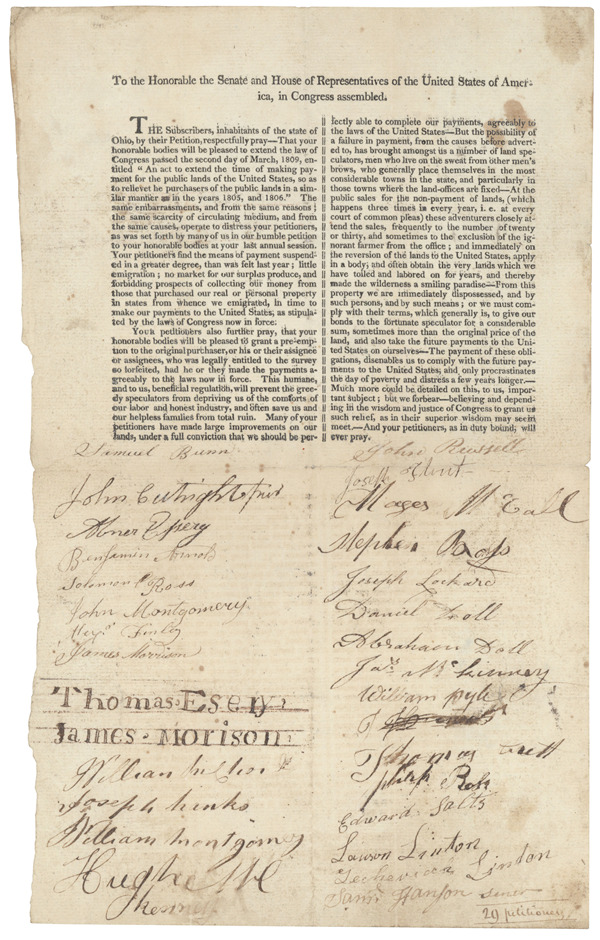
Petition of Ohioans to the Senate and House of Representatives Regarding Land Sale Policy
Record Group 233: Records of the U.S. House of RepresentativesSeries: Petitions and Memorials Referred to the Committee on Public LandsFile Unit: Petitions and Memorials, Resolutions of State Legislatures, and Related Documents Which Were Referred to the Committee on Public Lands during the 11th Congress
To the Honorable the Senate and House of Representatives of the United States of America, in Congress assembled.
[left column]
The Subscribers, inhabitants of the state of Ohio, by their Petition, respectfully pray-That your honorable bodies will be pleased to extend the law of Congress passed the second day of March, 1809, entitle "An act to extent the time of making payment for the public lands of the United States, as as to relievet he purchasers of the public lands in a similar manner as in the years 1805, and 1806." The same embarrassments, and from the same reasons ; the same scarcity of circulating medium, and from the same causes, operate to distress your petitioners, as was set forth by many of us in our humble petition to your honorable bodies at your last annual session. Your petitioners find the means of payment suspended in a greater degree, than was felt last year ; little emigration ; no market for our surplus produce, and forbidding prospects of collecting our money from those that purchased our real or personal property in states from whence we emigrated, in time to make our payments to the United States, as stipulated by the laws of Congress now in force.
Your petitioners also further pray, that your honorable bodies will be pleased to grant a pre-emption to the original purchases, or his or their assignee or assignees, who was legally entitled to the survey so forfeited, had he or they made the payments agreeably to the laws now in force. This humane, and to us, beneficial regulation, will prevent the greedy speculators from depriving us of the comforts of our labor and honest industry, and often save us and our helpless families from total ruin. Many of your petitioners have made large improvements on our lands, under a full conviction that we should be per-
[right column]
fectly able to complete our payments, agreeably to the laws of the United States-But the possibility of a failure in payment, from the causes before adverted to, has brought amongst us a number of land speculators, men who live on the sweat from other men's brows, who generally place themselves in the most considerable towns in the state, and particularly in those towns where the land-offices are fixed-At the public sales for the non-payment of lands, (which happens three times in every year, i.e. at every court of common pleas) these adventurers closely attend the sales, frequently to the number of twenty or thirty, and sometimes to the exclusion of the ignorant farmer from the office ; and immediately on the reversion of the lands to the United States, apply in a body, and often obtain the very lands which we have toiled and labored on for years, and thereby made the wilderness a smiling paradise-From this property we are immediately dispossessed, and by such persons, and by such means ; or we must comply with their terms, which generally is, to give our bonds to the fortunate speculator for a considerable sum, sometimes more than the original price of the land, and also take the future payments to the United States on ourselves-The payment of these obligations, disenables us to comply with the future payments to the United States, and only procrastinates the day of poverty and distress a few years longer.-Much more could be detailed on this, to us, important subject ; but we forbear-believing and depending in the wisdom and justice of Congress to grant us such relief, as in their superior wisdom may seem meet.-And your petitioners, as in duty bound, will ever pray.
[handwritten signatures, left column]
Samuel Bunn
John [Cunningham ? illegible]
Abner Epery
Benjamin Arnold
Solomon Ross
John Montgomery
Alex. Finley
James Morrison
Thomas Esery
James Morison
William [Aniston ? illegible]
Joseph Hanks
William Montgomery
Hugh [? illegible]
[handwritten signatures, right column]
John Russell
Joseph Flint
Moses McCall
[Hephra? illegible] Boyd
Joseph Lockard
Daniel Doll
Abraham Doll
[J ? illegible] Linnary
William Dyk
Thomas Cartt
Joseph Ross
Edward Salts
Lawson Linton
[Gecheviacca ? illegible] Lindon
Sam Hanford Senior
-----------
29 petitioners
-----------
53 notes
·
View notes